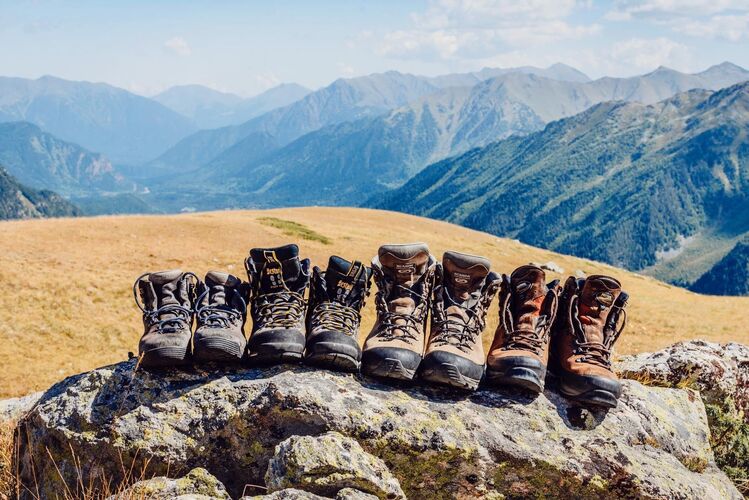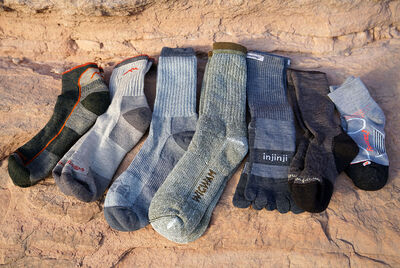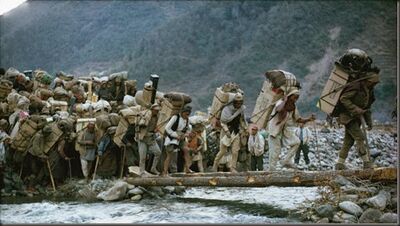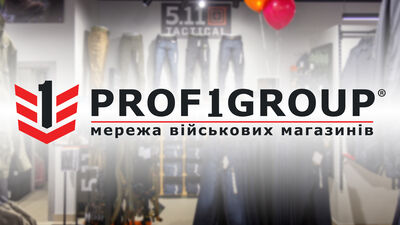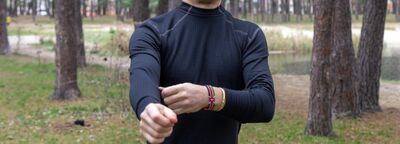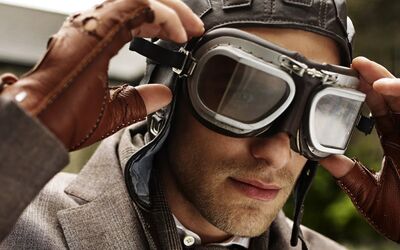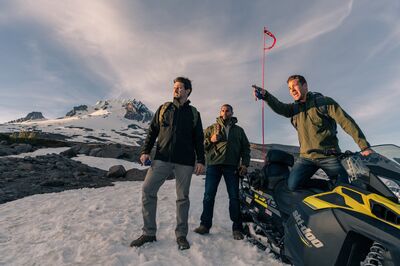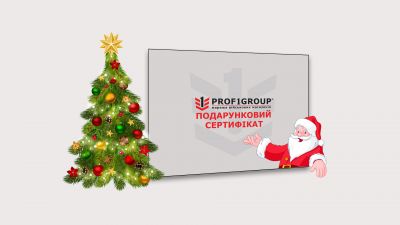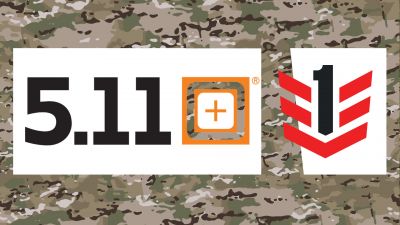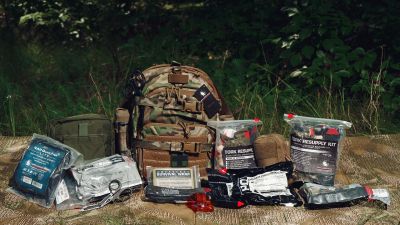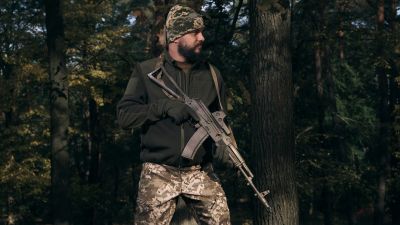Types of trekking shoes. How to choose trekking shoes for your needs.
Trekking shoes.
Many people have heard a joke that doesn't matter how old are your shoes if you walk in Paris. The author of this article is convinced that there is a very big difference. If you are on the road, and you do not have a good pair of shoes and a reliable backpack, then the traveler you are so yourself, I must say. Reading articles or watching videos or movies about travelers, many have a stereotype about the shoes for hiking - usually people imagine high durable boots made of thick leather, tractor tread instead of the sole and the appropriate weight like a good brick.
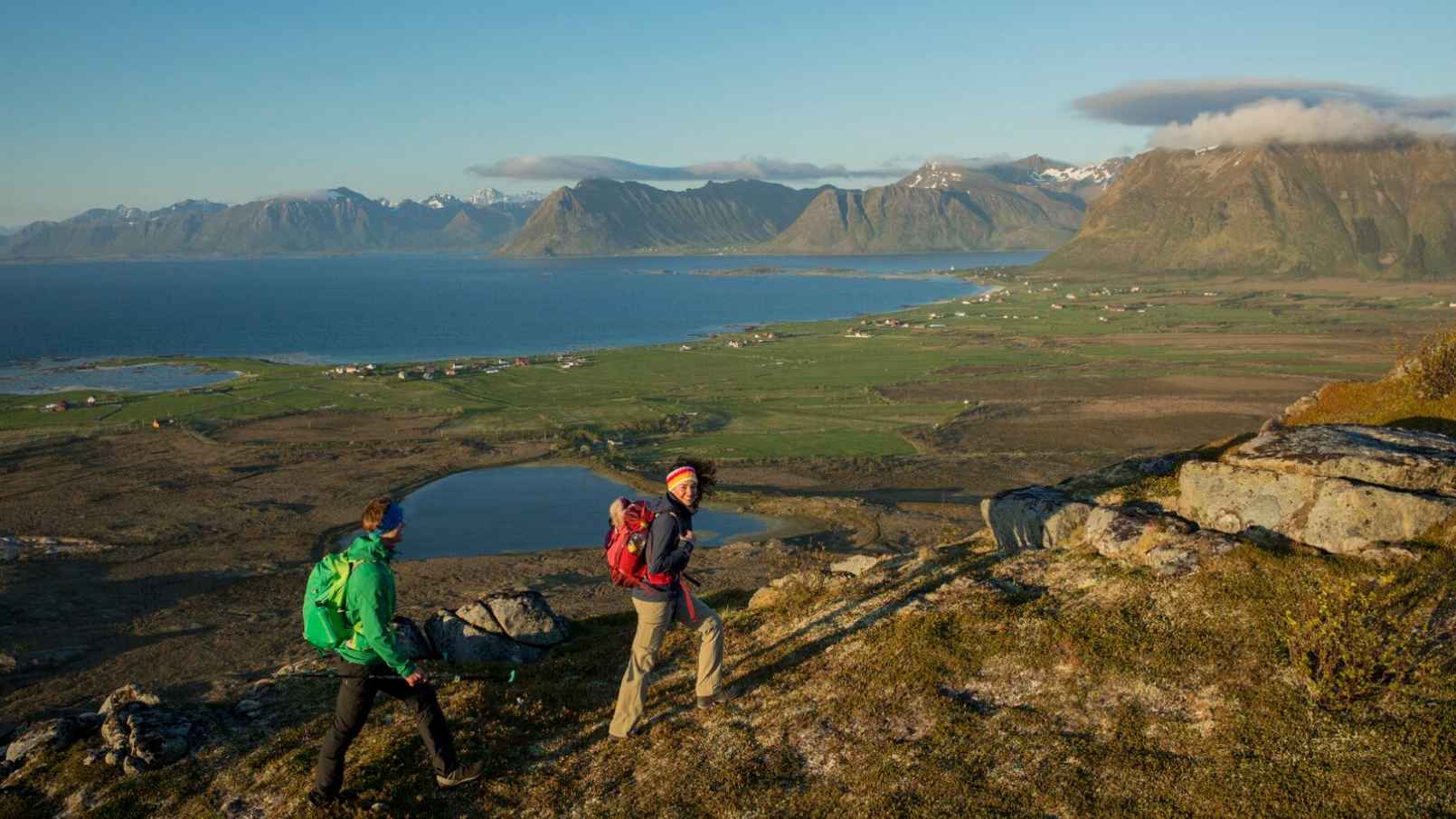
Nevertheless, progress does not stand still, and with it the development of technologies in the field of tourism and shoe manufacturing, among others. In addition to (and sometimes to replace) thick leather of 3-5 mm appeared fabric and synthetic materials, the sole learned to make smaller and lighter, but such that in a reliable way is not inferior to the one on which Nansen, Amundsen and Thor Heyerdahl opened the world to humanity in the last century.
Today's market offers an unlimited number of shoes for those who like to expand their comfort zone: high-tech materials, brands with well-known names for every taste and budget, men's, women's, children's, etc. In this article we will try to understand what it is – hiking shoes, its main varieties, their pros and cons, as well as provide reasoned recommendations when choosing a reliable and comfortable shoes for active or even extreme leisure.
Street shoe market near Kilimanjaro.

If we write "hiking shoes" on the Internet, we will see that this is a special kind of shoes that is used in its majority by tourists, travelers and the military to overcome rough terrain, forests, rivers, mountain tourism, etc.
The main difference of this footwear is the stiffer sole compared to the urban everyday one, which provides better grip with uneven, loose, viscous, often stony or slippery surface, prevents punctures of the sole, often special suppinators are used to compensate the pressures. The next difference is the rigid fixation of the ankle joint, which is provided by the height of the shoe, its special design and patented technologies of the manufacturer, prevents its dislocation, and damages that can have negative consequences during the trip. An equally important feature is the protection of the foot as a whole from falling rocks, bruises, soaking, hypothermia, etc.
When choosing shoes for outdoor activities, there are several important points to decide at once: what will be the format of your travels (duration, weather conditions, budget, etc.): go with friends in the summer by bus to Kanev to spend the night in a tent, maybe you went on vacation for a few weeks in the Carpathians, plan to ride a bike all over Ukraine, or you quit your job, sold everything that has at least some price and decided to become the first who will pass that route from Cape Town to Magadan by walk. For all these journeys you need different kinds of shoes, maybe not even one.
.jpg)
Conditionally hiking shoes can be divided into several types:
Trekking sneakers.
Used for easy transitions of medium complexity in rough terrain, they are made as light as possible and used without heavy equipment, or with heavy equipment but in short-term transitions. They look mainly as normal sports sneakers, but with a harder sole, technological materials. Such sneakers in addition to hiking trips of low complexity, are also used by many special forces in different armies of the world. Typically, this is a mobile units assault direction, moving in small groups on armored vehicles, despite the heavy equipment (flak jackets, weapons, ammunition, etc.) they do not walk too much and such sneakers are best suited for them: the design protects the leg from damage, good grip on the surface, also breathes well the leg itself. A vivid example is Lowa Phoenix, 5.11 Range Master.
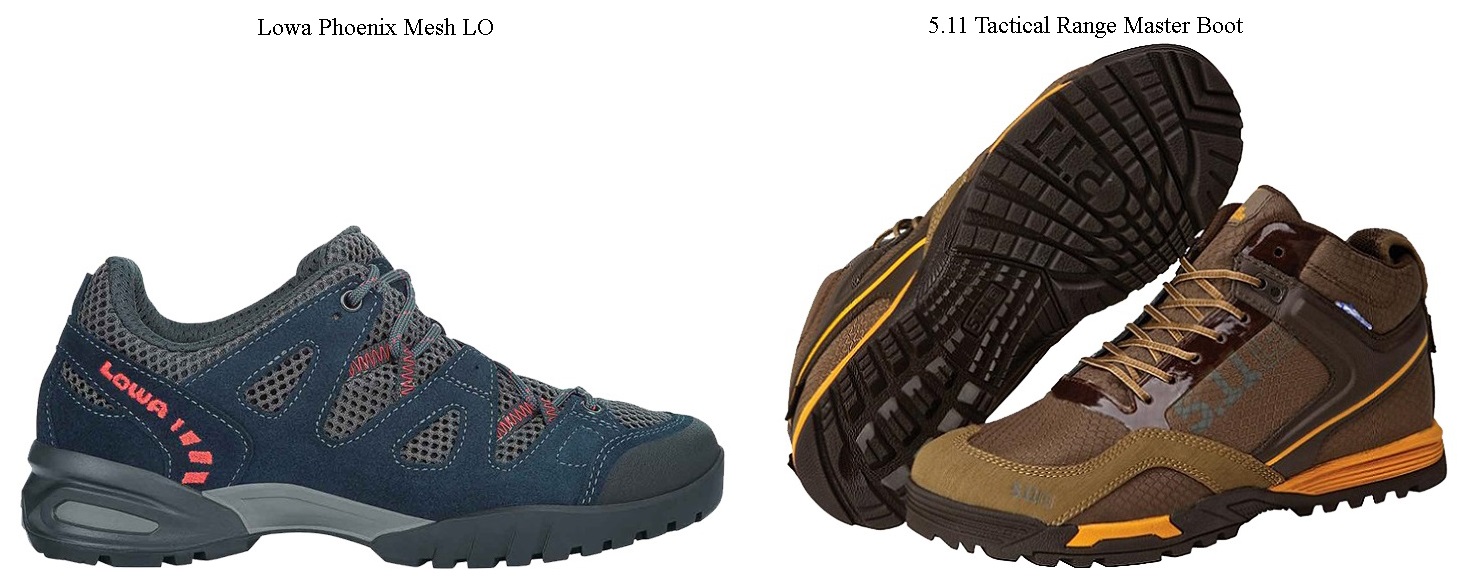
- Basic material – nubuk leather, suede, synthetic materials
- Material thickness – 0.8-1.4 mm
- Lining (Insulant) – absent or thin layer paralon (close buble)
- Sole – molded, glued
- Nylon shenk – in some models with glued sole
- Membrane – in some models Gore-Tex or equivalent
- Fixer alpine crampons – absent
These sneakers can be divided into several types of seasonality: hot climate, which in turn is divided into tropical with humid tropics, equatorial climate, dry desert, etc. Usually, synthetics, or the thinnest suede, are used here. This is due to their main feature – such materials protect the leg from damage and dry quickly (the climate in the equatorial forests is very humid and legs will get wet sooner or later). As a rule, membranes in such boots are not used, because of their inexpediency. Such technologies came from the first Jungle shoes of this direction – as light as possible, less skin, more tarpaulin and synthetic. Such boots get wet quickly, but also dry quickly and without thickeners, membranes and smoothly colored skin.
Demisseason hiking shoes.
They are producedfrom synthetic materials (nylon, cordourie) or fine suede 1.5-1.7 mm for greater boot density and foot protection, they are also lightweight, breathable and dry quickly. Due to lack of information, many people buy such shoes for use in winter conditions. In some cases, this is correct, but it is important what winter the owner of these boots expects. They are suitable for winter in the city: smooth roads, sidewalks, a little snow and ice, and there is always the opportunity to warm up. If we are talking about tougher conditions, it is worth thinking about.
Their main feature is, first of all, the sole. Here the chemical composition, material, pattern are of great importance - the most important features of this part of any shoe.
Also often such shoes have good insulation and membrane, and despite the classification of "demi-season", it is rather not autumn-spring, but already autumn-winter-spring. Smooth leather is often used here, but it is rather because of the tradition of individual units and armed groups and personal preferences of the user, as nubuck leather, suede and synthetic materials are also widely used for the manufacture of such shoes and have their advantages, which will be written about later. The sole here is made by casting and bonding method. A striking example is one of the most popular and recognizable in the world, the shoe model Lowa Zephyr, or a new model from the company 5.11 A/T 8".
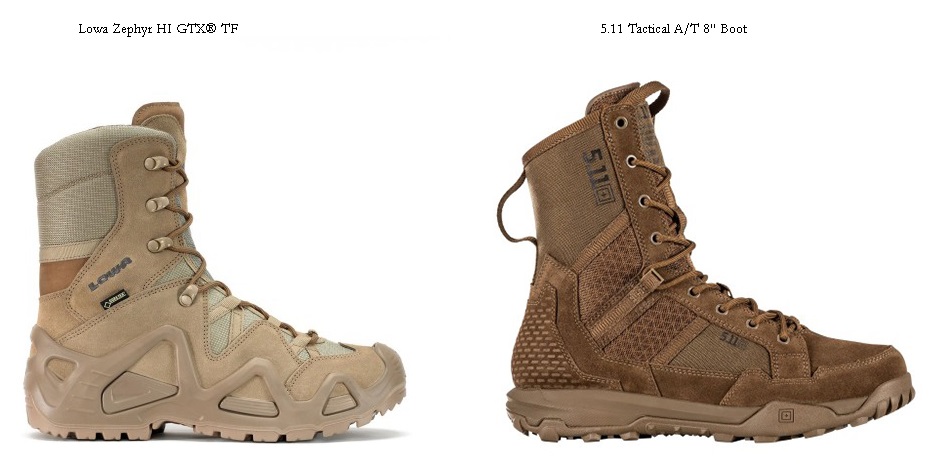
- Basic material – smoothly colored skin, nubuk leather, suede, synthetic materials
- Material thickness – 1.5-1.6 mm
- Lining (Insulant) – paralon (close buble), insulation
- Sole – molded, glued
- Nylon shenk – mostly models with glued sole
- Membrane – lot of models Gore-Tex or equivalent
- Fixer alpine crampons – absent
Hiking boots.
Harsher tracking boots can be divided into two types: normal and high stiffness:
Hiking shoes.
Often, at first glance, there is small difference from the hiking sneakers. The difference between hiking boots and hiking sneakers is the sole, which is more rigid, as well as a thicker upper layer with a smoothly colored skin or nubuk leather – 1.7-2.5 mm. Hiking boots are more likely to be ¾ height, this provides a good fixation of the ankle, which in the future protects it from sprains. The sole in such boots is used both glued and molded. The main materials for sewing are smoothly colored leather, nubuck, often used synthetic and nonwoven materials. Also almost always Gore-Tex membranes or other well-known and no less effective technology are used – leather stocking (backing), which is made of thin, strong leather (most often – goat), and sewn inside the shoe. This type may include the previously mentioned Lowa Z-6S.
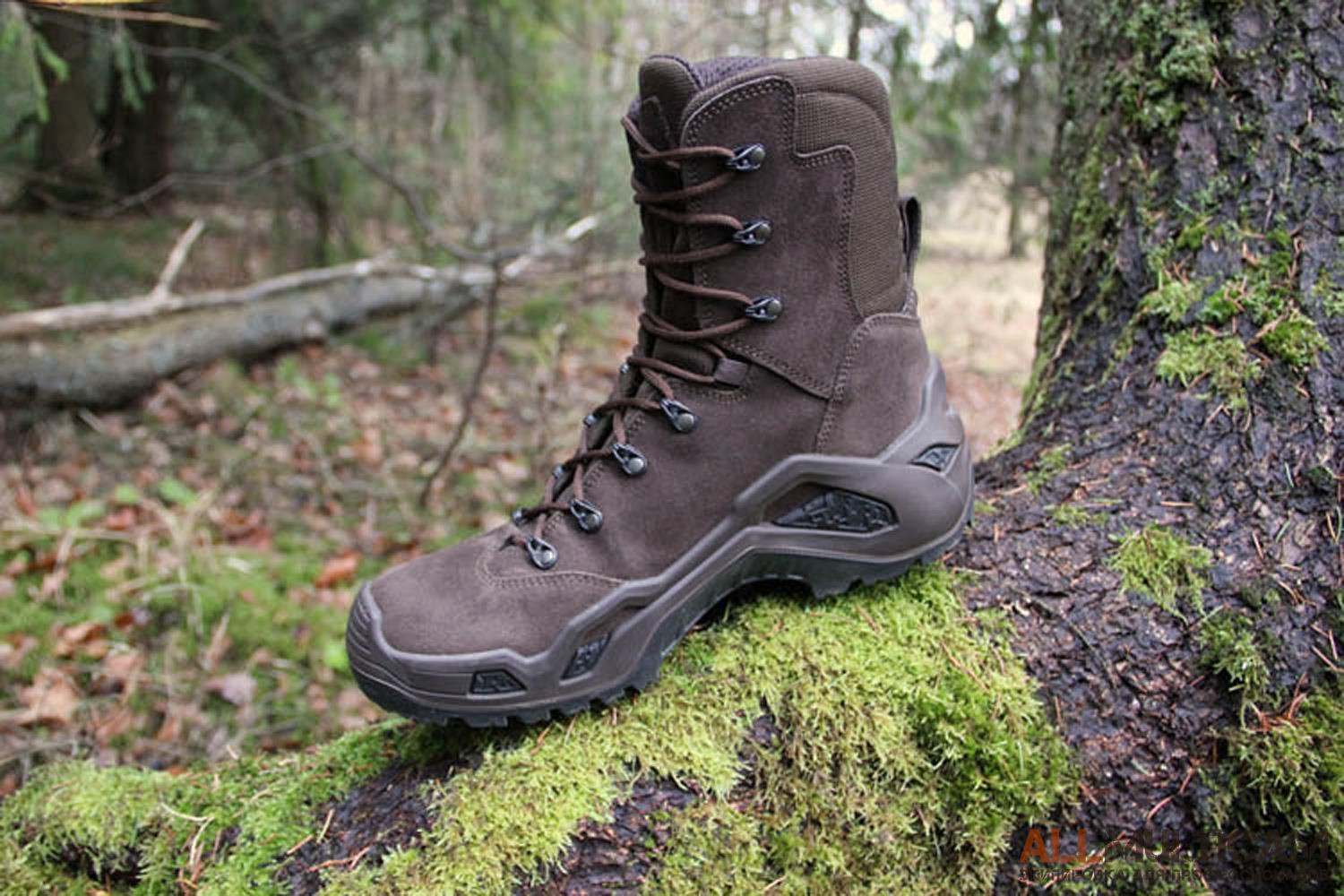
- Basic material – smoothly colored skin, nubuk leather, suede, synthetic materials
- Material thickness – 1.7-2.5 mm
- Lining (Insulant) – paralon (close buble), insulation
- Sole – molded, glued
- Nylon shenk – mostly models with glued sole
- Membrane – lot of models Gore-Tex or equivalent
- Fixer alpine crampons – absent
Mountain/field boots with hard soles.
The most popular height is ¾, almost always with a membrane, only glued sole, rubber rand all over the shoe. Such shoes are well suited for long transitions of medium to high levels of difficulty with medium loads on any surface. More often, they are made of nubuck or smoothly colored leather, and synthetic and nonwoven materials are widely used to reduce their weight and improve ventilation. The so-called "Nylon Schenk" technology is always used – in fact, it is a special intermediate sole between the inner and outer soles of the shoe. This is a durable, but at the same time very flexible gasket, which can withstand high loads, high temperature fluctuations.The use of this technology is possible only with glued method of fastening the sole, due to the impossibility of producing a miscellaneous sole cast method of fastening. Almost everywhere Gore-Tex membranes and their analogues are used. An excellent example are Lowa Tibet and Lowa Mountain.
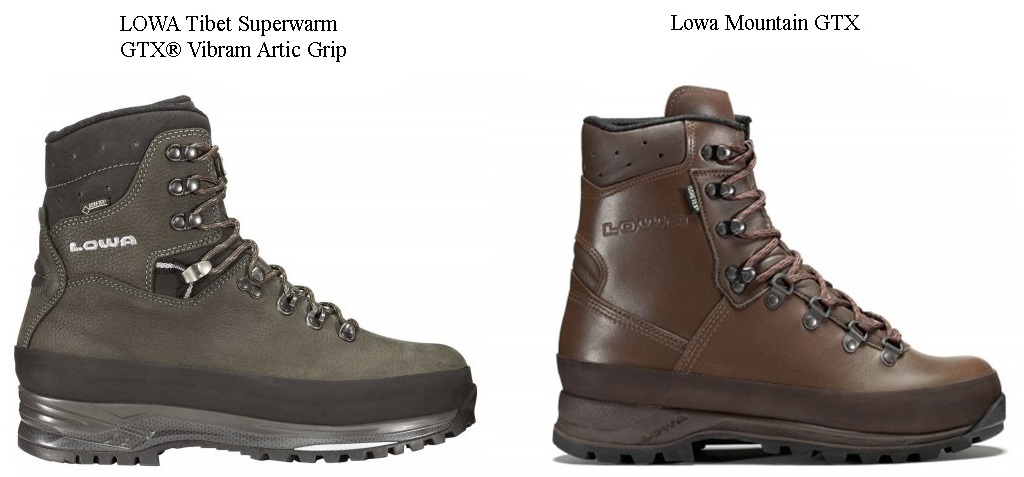
- Basic material – smoothly colored skin, nubuk leather, suede, synthetic materials
- Material thickness – 1.7-3 mm
- Lining (Insulant) – paralon (close buble), insulation
- Sole – molded, glued
- Nylon shenk – mostly models with glued sole
- Membrane – lot of models Gore-Tex or equivalent
- Fixer alpine crampons – all models
Harsher models of this type are used in extreme mountain conditions or in low temperatures outside the city, on such models there is already a fixation for alpine crampons or snowshoes, which are absent in lighter models.
Exceptions to this type of shoes are models made to order various special units. Some companies produce shoes for the relevant terrain and specifics of work – desert hot terrain, abrasive surface (stone, sand), etc.. Such boots are not usually available in civil sales. For example, the regular Lowa Elite Desert boots of British Marines during the war in Afghanistan in 2001-2014.
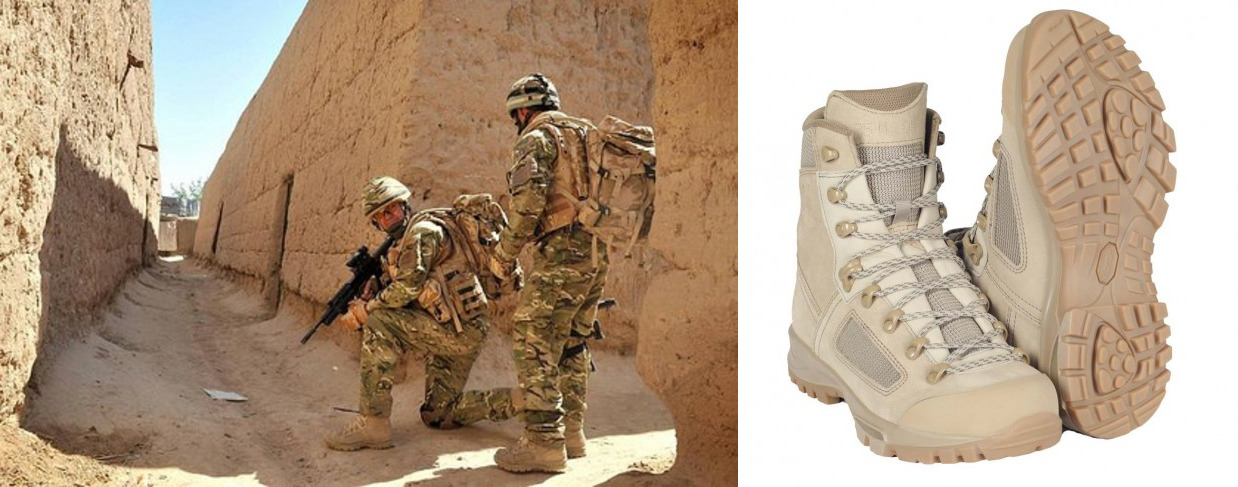
The second type of shoes – heavy expedition boots.
They are used in the harshest conditions, in hikes of extreme complexity, mountain climbing, expeditions and the like. These are special shoes for professional travelers, sportsmen and researchers. They are mainly made of synthetic materials, designed for ultra low temperatures – the declared mode of comfort of some models reaches more than 40 degrees below zero. These are the most durable shoes, ready for any extreme conditions. It is also the most expensive and not so popular among athletes and military, so it is not so widely represented in the modern market.
One of the leading manufacturers of such footwear is Lowa company, which began its history in 1923 with the production of shoes for climbers, and still working with the leading athletes in this field is one of the best manufacturers of this type of shoes. The use of high quality materials exclusively made in Europe, ranging from leather to threads and hooks for laces, constant control of temperature and humidity in production and storage facilities, storage in the factory leather for the manufacture of shoes for no more than three weeks, etc. – helps to keep the quality bar high for almost a century. If the specifics of your travel or work requires the use of this type of shoes, you should understand that such conditions do not tolerate fakes.
Lowa Expedition Evo 8000. These boots were used for climbing all the peaks at 8000 meters.
.jpg)
- Basic material – nubuk leather, synthetic materials
- Material thickness – over 2.5 mm
- Lining (Insulant) – paralon (close buble), insulation
- Sole – glued
- Nylon shenk – all models
- Membrane – Gore-Tex or equivalent
- Fixer alpine crampons – all models
Also, due to the emergence of new high-tech materials, new needs and desires for comfort in the last twenty years, created new type of shoes – tactical.This is a comfortable, high-quality urban shoes more sneaker type, but designed for use mainly in urban environments. It is often used by police, assault units, which require reliable, high-quality shoes for more active and diverse applications, hard, abrasive, often uneven surface. One of the first tactical shoes is Adidas GSG-9, Magnum Hitech, later mass production was started by Lowa company. Today, the world leader in the production of tactical shoes is the brand 5.11, read more about it in our materials.
First tactical boots: Adidas GSG-9 and Magnum Hi-Tech.
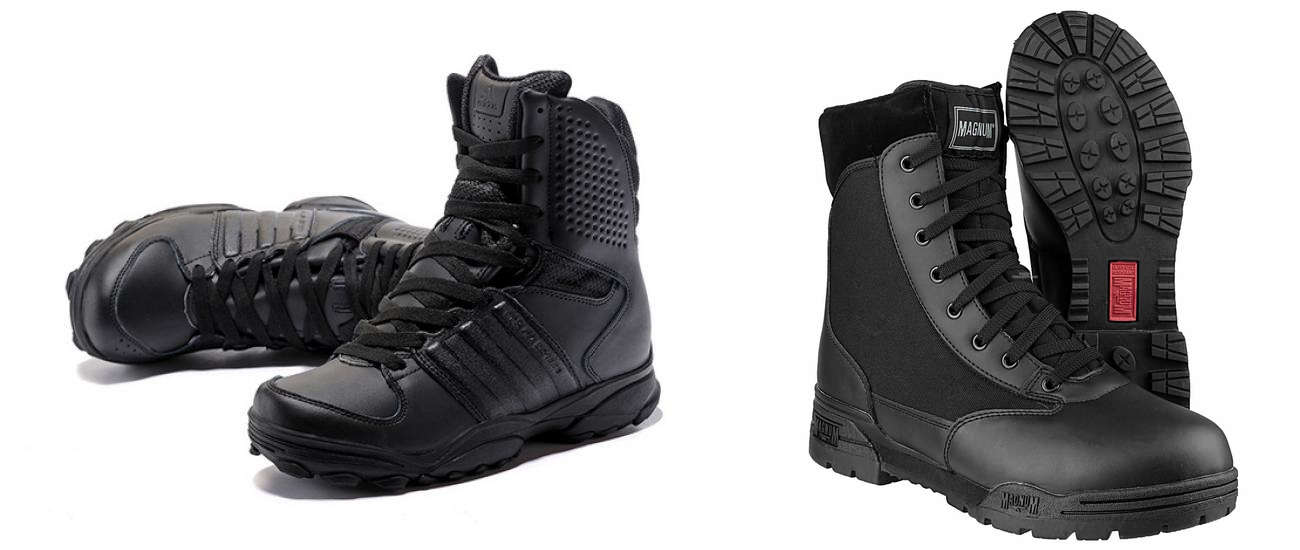
Recommendations on selection, use and care.
One of the most important points, the upper of the shoe: the outer layer, the gasket, the membrane, even the threads used to stitch the shoe and lacing - all this is important in his choice. The materials of the outer layer are of the following types:
- Smooth leather – is a traditional, reliable way of sewing quality shoes, which protects the foot from damage and water repulsion. But this method has its significant disadvantage – the shoes can get wet sooner or later and here you will face the problem of drying them, and the moisture in such shoes does not dry out too quickly, because of the use of lacquers and paints in the treatment of the leather, so that such material does not let moisture out.
-
Nubuck and suede – lightweight and reliable materials, using the Gore-Tex membrane shows no worse than water repellency, but at the same time they dry much faster, for these reasons, every year more and more manufacturers and buyers switch to such materials. An important point is also the fact that with active daily use in this type of shoes less damage to the outer part, no less advantage of this material is ease of care – if the shoes with smooth leather needs regular care, lubrication, rubbing, etc., then it is enough to wipe the shoes made of nubuck and suede with a damp sponge, if necessary, to treat with waterproof spray.
-
Synthetic and nonwoven materials. Compared with previous materials have less weight, show good waterproof characteristics, also dry well, but often are not as reliable to wear as previous materials. In recent years, when making shoes, synthetic materials are combined with natural materials, which also gives good results.
Intermediate layer of insulation and substrate, most often used here is paralon with a closed and open cell, the latter is less effective in damp environments because of its spongy structure, which leads to rapid soaking of the shoes, so buy shoes made of this material we do not recommend. The most popular insulators today are Thinsulate, PrimaLoft and others.
Membranes. The most popular membrane in sewing shoes today is Gore-Tex technology. In recent decades, many companies have started to produce their own membranes, but the main difference of Gore-Tex is the control of each batch of any product, where it is used at all stages of production. All manufactured batches of shoes, jackets, gloves, etc., will not receive the brand tag "Gore-Tex" until the company-manufacturer of the membrane itself will check the products for various indicators in its laboratories, which have a high level of international accreditation.
This is one of the few companies that will not allow their materials to be used in the products if they have not tested the quality of their own testing system, from the design of the product to the tests on the finished product, which is randomly selected from each batch. A striking example is the test, in which the robot in a specially built chamber with water simulates human steps in a humid environment, the number of such steps taken must be 200 kilometers, and sensors installed inside the shoes should show only a slight humidity at the end of the test. Only with the successful passing of such other tests, the product receives a certificate of compliance with European and other international quality standards.
Sole. There are many different types, materials, drawings and technologies by which it is made. For different regions of application is the appropriate type of sole. For example, in a city you need a sole with good grip on abrasive surfaces: concrete, asphalt, etc. In the mountains, it is such that it well compensates for the load on the legs; for wet equatorial forests, a special sole pattern is used to easily clean the shoes from the dirt that adheres to it.
The photo shows the famous model of Jungle Boots of the U.S. Army. Characteristic sole.
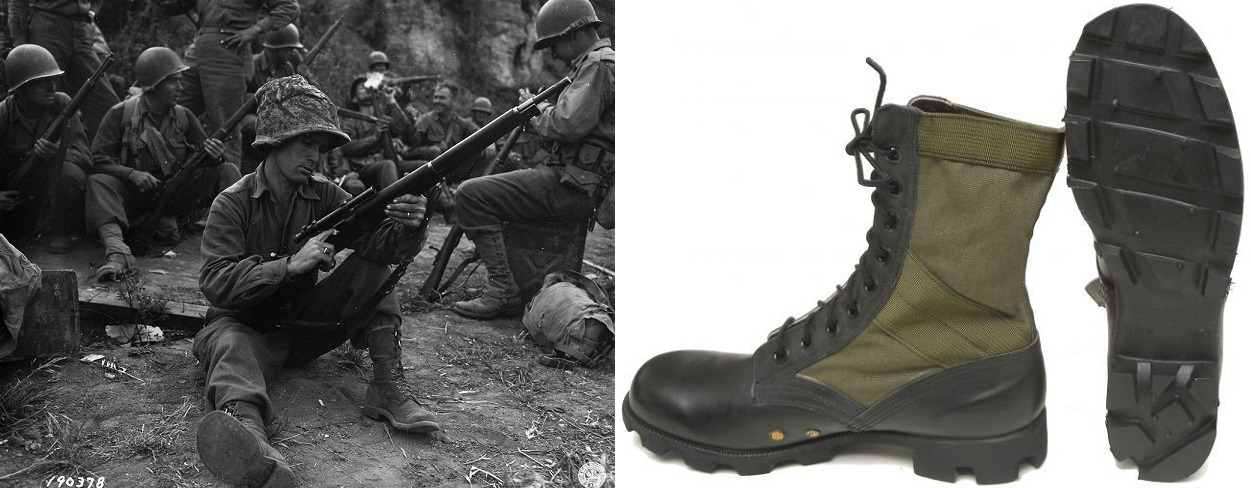
The process of designing and manufacturing is expensive and technologically complicated: testing of different materials in different conditions, research of different chemical compositions, this or that technology, design of the drawing etc.. Many companies use the services of well-known developers, whose specialization is the design and manufacture of soles.
The most famous manufacturer of sole for hiking shoes is the company Vibram, founded in 1937 by the famous climber Vitale Bramini, this brand has long since become the standard of high-quality sole for hiking shoes. Recently, among some companies that have their own scientific and technical base, there is a tendency to patent their own technology soles. A striking example is also the company Lowa, which in its shoes uses both Vibram soles and its own developments, showing excellent results.
Summing up, let's say – no matter what happens, no matter what good prices and all possible colors and designs you did not offer, remember – the most important thing when choosing hiking shoes – quality and reliability.There is nothing complicated here: if you bought good shoes, a well-known brand that uses high quality materials, controls the production processes at each stage of production, checks their reliability and functionality by working with the best athletes and specialists in this field, then most likely your trip will be interesting, comfortable, without any significant troubles.
If the manufacturer uses cheap and unreliable materials, does not have its own scientific and technical base, or does not use the services of such, but is engaged only in the fact that sews shoes of its own design or copies of famous models, and the quality, reliability and functionality are not confirmed by anything, then your journey may not be so comfortable. When you are 50-200 km away from the nearest city in a harsh climate, and the shoes are not of the highest quality, only then you begin to realize that reliability, quality and safety are disproportionately important, and good shoes can not be cheap.
An important part of wearing shoes is the hiking socks you use. Good hiking socks make your travel more comfortable, remove moisture and have good thermoregulation characteristics. Read the following article about the types, characteristics and how to choose the right tracking socks.
Another important aspect of using the shoes is their rest. Advanced users claim – that when to have two pairs of shoes, even the same model and wear it one by one, the expiration date of both pairs of these shoes is much longer than if you constantly wear one pair of shoes, and then the other.
When using suede shoes – buy a special waterproof spray. Usually, you can buy them from an official dealer of quality branded shoes; it is important that this spray is also of high quality. If you buy this product in an underground passage, you may damage the membrane, or the upper layer of your shoes.

If you wash your shoes in the washing machine – put them in special bags, an old pillowcase, or just put socks on your shoes - so you will keep both the washing mashine and the shoes.
Do not dry wet shoes on a battery, with a hair dryer or near an open fire – it can lead to deformation of the shoe in a badly warmed or overheated part – better use crumpled paper (without printing ink, which may remain in the middle).
During seasonal storage, treat leather boots with special products that prevent the skin from drying out, for example, you can rub a shoe cream.


